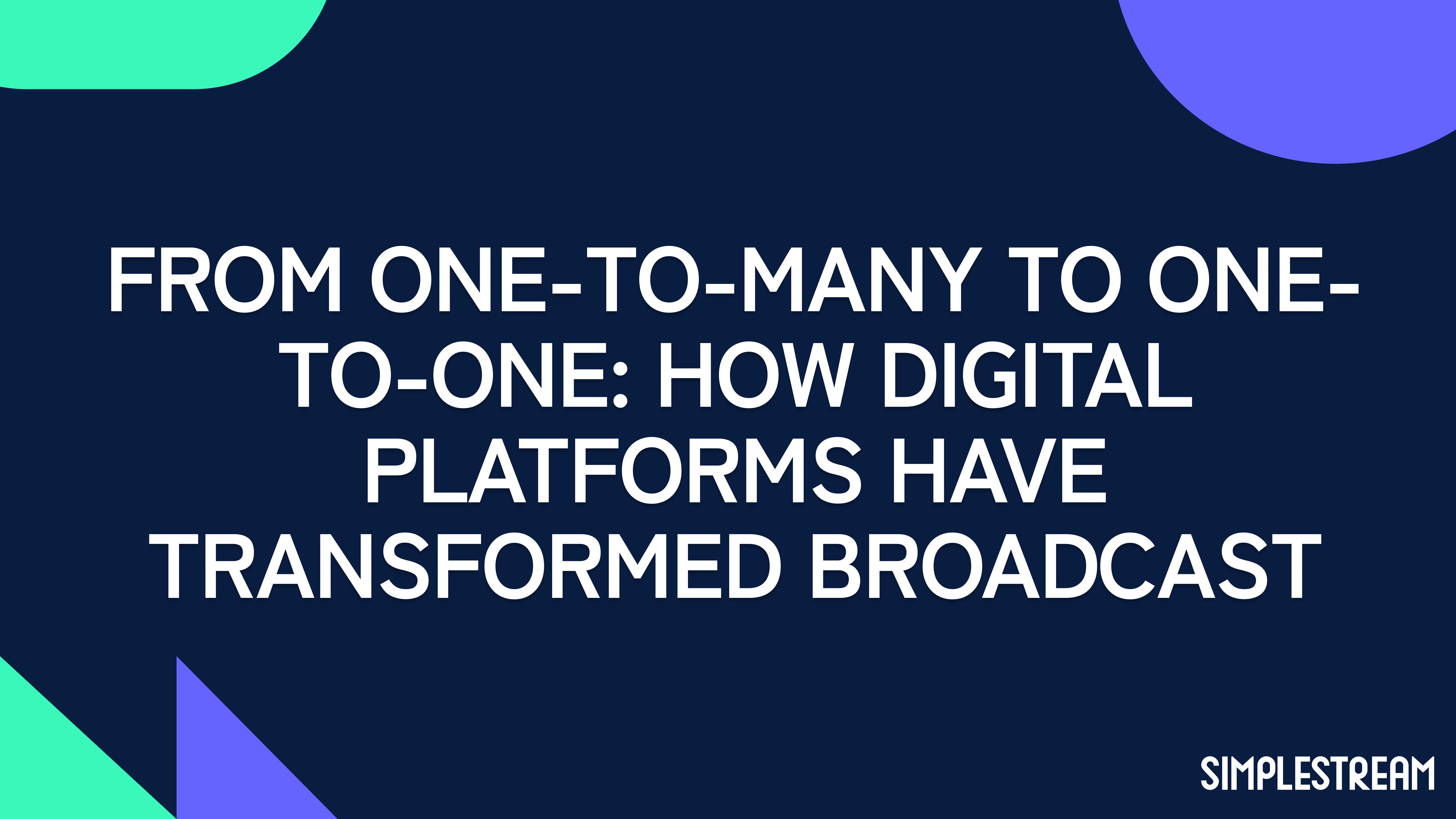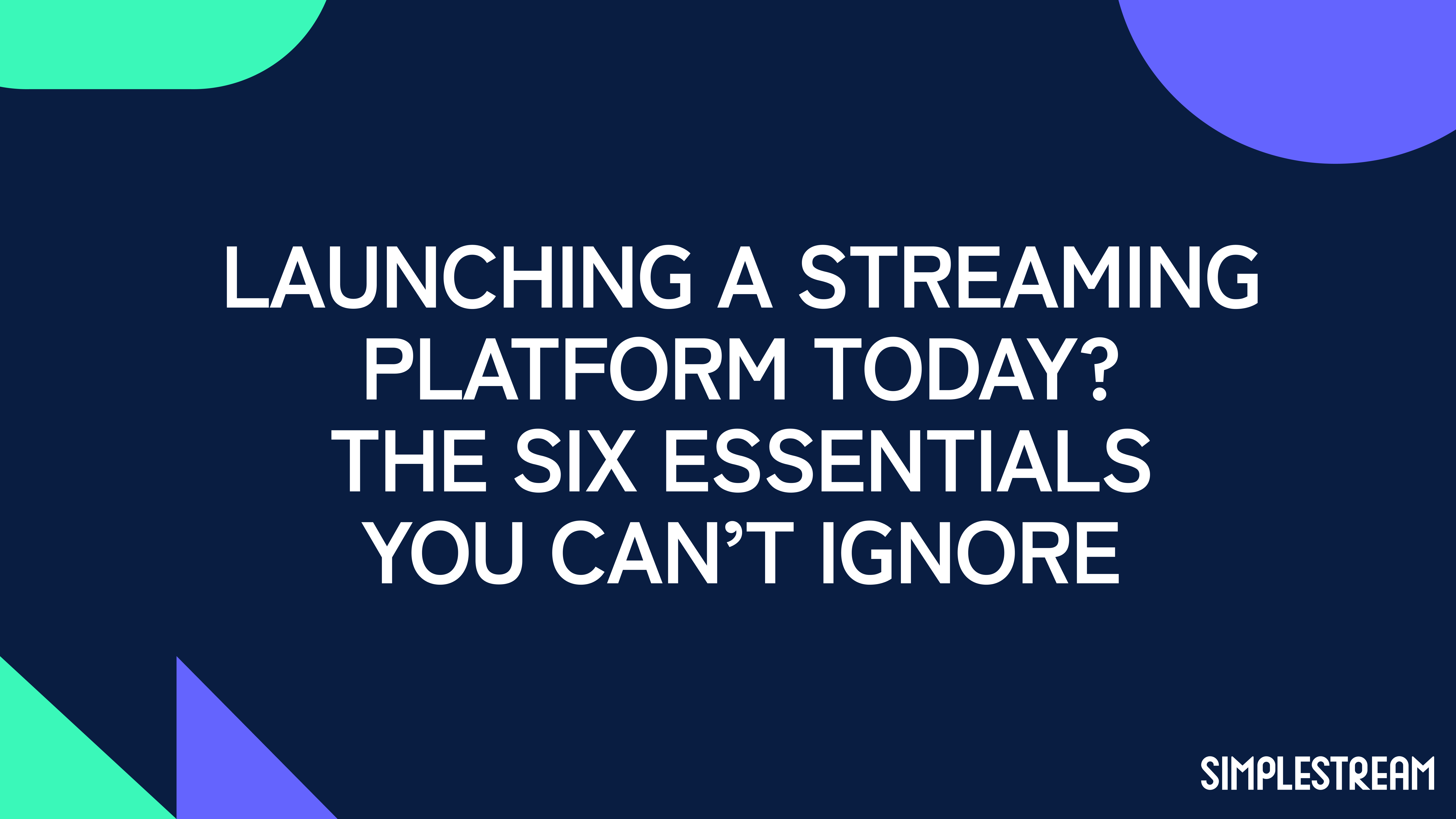Launching a successful D2C streaming service: four things to remember - Focus on the experience
Experience has become the new currency for customer acquisition and retention. And it's key to business success today.
Building and launching a successful direct-to-consumer (D2C) streaming service is not an easy task. It doesn’t happen overnight, and the foundations of an impactful strategy need to take into account a number of factors.
In the first chapter of our blog series, we explored the importance of a customer-focused approach. Putting your customers first, and looking at their needs and wants is the first step towards a profitable streaming service. What naturally follows is another key to open the gate to a winning D2C strategy: experience.
Viewership figures keep rising amid a ‘streaming war’ exacerbated by the Covid-19 pandemic. OTT brands have been accelerating their shift towards innovation, evolved features, and – in general – more sophisticated user interface (UI) and experience (UX) to attract more consumers. We mentioned it already: experience has become the new currency for customer acquisition and retention. It’s integral to business success.
In this piece, we focus on what can make your user experience the real key differentiator, the most powerful engagement tool, and the way to keep your audience glued to your screens. The ingredients? We look at the ideal technology stack, of course, but we also keep an eye on the content offering that needs to act as the real magnet – together with personalisation – to attract the interest of users in an ever-evolving scenario. Read on.
#1. Interusability across multiple devices
Cross-platform experiences have rapidly become the norm. The streaming world is now more than ever an environment where functionality and interactions are distributed across more than one device. Needless to say, it’s no longer enough to design individual user interfaces in isolation. So, how do you think about how UIs can seamlessly work together, especially when the end-user moves between using different devices?
A consistent approach across different devices is summarised by the concept of interusability, built on these foundations:
- Composition (how devices and functionality are organised)
- Consistency of interfaces across multiple devices
- Continuity of content and data sources between platforms
What’s the end-goal, then? Each OTT app should look and feel similar. Think of a sign-up process completed in a few taps (remember, you can encourage sign-ups by streamlining this journey) when on the go and on a smartphone. Think then of users who pick up the process from where they left it off, on another device, like a Smart TV, or a tablet. Your UI design must be optimised for the highest levels of experience on each device.
The objective is to make your customers feel comfortable and safe across that short, yet crucial journey that separates them from their content of choice. Rest assured, content is still king and sits on your platform’s throne, yet its castle will be made of sand, unless built upon the solid foundation of strong features and seamless interusability. Or you’ll take the risk to lose your audience at the first, crucial date. With very little chances to win them back.

#2. Make your content discoverable
Content fatigue anyone? Endlessly wondering: ‘what should I watch tonight’? With so much stuff flooding our screens you can have the biggest archive of on-demand material to satisfy thousands of hours of consumption, yet, if your platform’s content lacks discoverability, your churn rates will sadly go up.
Technology – especially in recent years – has paved the way to more efficient ways to organise, display, and suggest content to watch in a user-friendly way. ‘Don’t make me think what to do’, is what our ideal end-user might say when browsing content on a newly joined OTT platform. What about leaving that freedom of aggregating favourite content in the users’ hands? That’s when watchlists become a great ally in your OTT offering, an excellent way for customers to curate their own categories of content to be consumed at will.
You don’t need to be Netflix, and most likely you cannot. Yet, if 55% of OTT subscribers look for something new to watch on a daily basis and 62% struggle to find something to watch – according to recent research – it’s paramount to summon product teams and UX experts in the same room. Then let the conversations flow on how to best organise your content offering and make it accessible at first sight.
#3. Personalise, and make it interactive
There’s no denying that the success of your streaming service mostly depends on the perceived value your end-users feel they are getting. Viewers today demand to be at the centre of the stage, in control of their experience from the moment they sign-up to the crucial stages of discovery and consumption of content.
Gone are the days of basic profiling and ‘one-size-fits-all’ recommendations, the ascent of OTT platforms brought a whole new world of consumer data exploitation. Giants like Netflix are mastering the art of personalization by fine-tuning the process of bespoke recommendations that keep their subscribers glued to their screens.
What about interactivity? Undoubtedly, this is another emerging trend in the industry, as OTT platforms are naturally looking to increase the engagement rates with their audiences. As technology partners refine their value proposition with an eye on specific verticals, it becomes key to offer functionalities to expand and deepen the experience for specific target audiences. Think of entertainment platforms that tap into younger generations or specifically target kids. At Simplestream, we integrated an Art Pad solution for kids channels, a drawing board that allows kids to take part in contests and express their creativity. It’s a simple, yet powerful, way to engage more and better younger audiences, and to turn a simple viewing experience into an interactive one.
Conclusions
What we have been discussing above is just the tip of the iceberg called experience. It’s not an exact science, and – like every single aspect in today’s digital world – it’s a matter of consistently refining best practices to reach a specific set of objectives. Yet, there are elements you need to start with, when thinking of your D2C streaming service. Interusability, easy discoverability of content, and personalisation across your services are great starting points to create reliable paths for users to really feel they are in the right place to spend their precious spare time.
Follow us as we explore the world of D2C streaming platforms. In the next chapter we will be talking about the importance of constant research and development on your platform. In the meantime, click the link below to access the previous chapter of our blog series:


